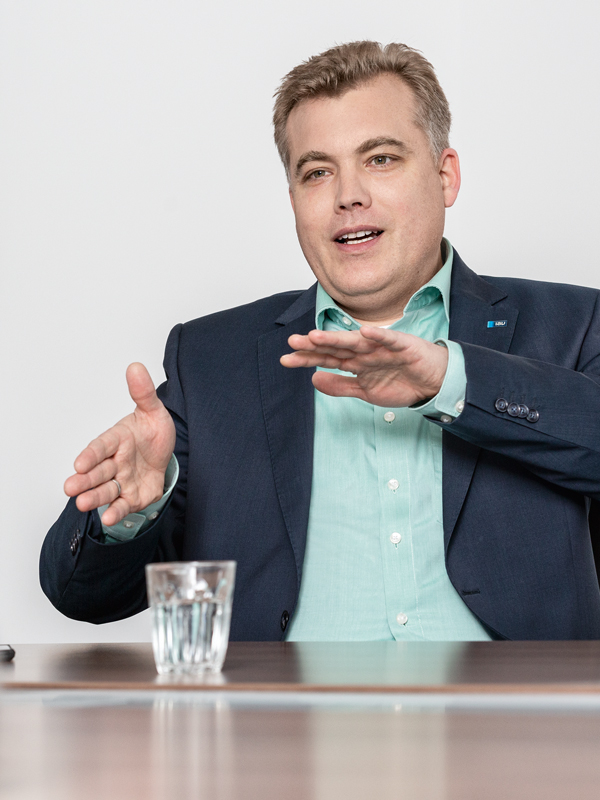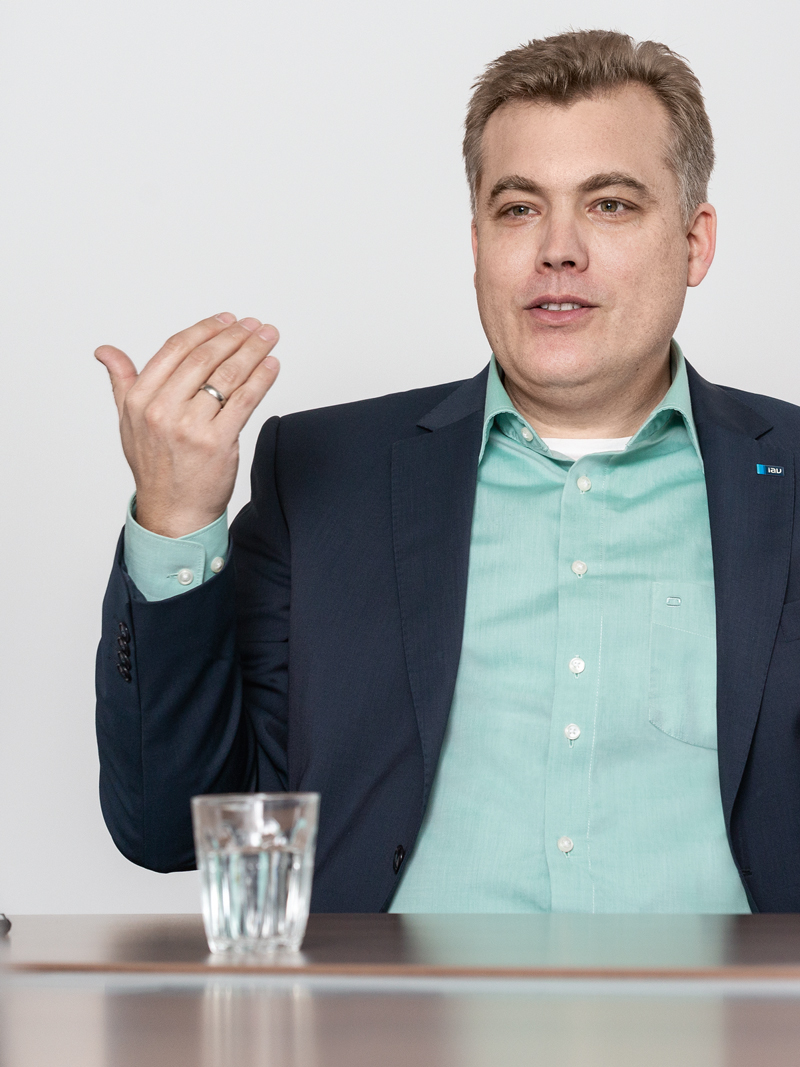“IAV is not a commodity company, IAV is an original.”
The race for digital pole position in the automotive sector is in full swing. The central role for tomorrow’s mobility is played by the software. How to deal with the ever-increasing pace of innovation and players like Google or Amazon? Markus Blonn, Senior Vice President Network Software at IAV, on a market in motion, old rear-view cameras and the courage to take risks.
automotion: Mr Blonn, what is the state of software development in cars today?
Modern cars today contain about 100 million lines of software code – about four times as much as fighter jets. In the past, we used embedded control systems that had a volume of 4 MB; now we’re at about 40 GB. In addition, the state of the art is no longer static but dynamic 64-bit architectures, which allow software updates to be applied over-the-air. In comparison, software development for a rear-view camera system from ten years ago feels like programming in assembly language.
automotion: What changes has that brought to the market?
Software has become the decisive factor in meeting customers’ need for sustainable and connected mobility. At the same time, it remains invisible: For the customer, the software is good if the services it delivers work and the security is reliable. We no longer think of software only in terms of the vehicle, but in terms of an interconnected world. Tomorrow’s mobility will be defined by scalable services. To ensure that such cloud or on-premise applications run smoothly, an IT infrastructure with appropriate computing and storage capacities is just as necessary as compliance with legal requirements for data protection and data security.
automotion: And how can IAV provide support in this regard?

«IAV is very good at translating complex physical problems into software solutions.»
— Senior Vice President Network Software at IAV
In terms of content, with the implementation of the UNECE regulation for software updates and security, we are also well on the way to closing the distribution chain from requirements to testing and beyond. We have integrated Technical Compliance and meet Automotive SPICE Level 2 standards with qualified tool chains. As a result, when it comes to cyber security, we have fewer gateways for hacker attacks and system errors to worry about. As a result, we develop handcrafted, high-quality software for end-to-end functions. In vehicle access systems, we can combine our strength from the embedded and IT worlds.
automotion: It feels like every OEM now wants to develop their own software and operating system – what’s in store for us?
It’s actually true: Whoever has the monopoly on technology retains sovereignty over all digital services and customer data. Nevertheless, not every corporation will develop its own operating system. I expect that we will see at least two operating systems from the USA. Android is one candidate. I expect a similar move in China, if only because the market follows different rules, for example in terms of privacy and security. And in Europe, too, I expect one or two operating systems to become established. The chances of this are good, not least because the pace of development has picked up considerably in this country.
automotion: Will a partner like IAV still be needed at all when OEMs become software houses?
As far as our role is concerned, two points count for me. First, we are very good at developing functions, defining requirements together with customers, creating production-ready solutions and integrating them into the vehicle. We responded early to the changes in the automotive industry, so our solutions can launch on the market in a timely and reliable manner, whether it’s connectivity issues, autonomous driving, modern powertrains, test procedures or safeguarding. Secondly, we have focused more on services and can, for example, offer software-as-a-service solutions for which we take responsibility. Here we can also confidently say:
«IAV is not a commodity company, IAV is an original. We must remain true to this and continue to adapt and develop our services in line with market needs in the future.»
— Senior Vice President Network Software at IAV
As already mentioned, mobility services are currently changing more than ever before. Here, too, we are working with our customers to create appropriate services and solutions.
automotion: And where does IAV still need to step up its game?
In terms of speed: We need to develop software even faster, without compromising on reliability and safety, of course. We can achieve this by further automating the development process and thinking more strongly in terms of networks in order to further increase our software expertise. We have an internal qualification program that is geared towards technology developments on the market and thus future-proofs the software. What also helps us are close ties to science. We are a member of the Softwarecampus of the German Federal Ministry of Education and Research and help to educate the next generation of leaders in software development. We also have some partner projects with universities. For example, with the Mittweida University of Applied Sciences, FAU Erlangen-Nuremberg on an open source project, and the University of Oldenburg on the topic of architectures. We are on the right track here.
automotion: Why is this exchange with the academic community so important?
It provides us with IT and software expertise from outside. Bringing colleagues together with students, with spin-offs from TUs or start-ups that are implementing innovative topics, jointly launching new prototypes – that helps to further develop our own innovation culture. We have extensive expertise in series production and a high quality standard. However, the latter also means that it sometimes takes too long to bring concepts to market and develop them further with customers. Here, we can take a leaf out of Silicon Valley’s business culture and dare to take more risks. Even if that means that you sometimes fail with an idea.
automotion: Keyword Silicon Valley: What do digital companies like Amazon or Google do differently than representatives of the traditional automotive sector?
There are currently still two different approaches, Silicon Valley vs. Europe, or to put it another way:

«Data center vs. vehicle. Google, Amazon and Co. are pursuing a data center approach; for them, the car is only a means to an end.»
— Senior Vice President Network Software at IAV
They develop software, the car lends itself to these companies as another sales platform, so they build the vehicle around the software, because the software is the focus.
We in Europe, on the other hand, still think vehicle-centric. But with the data center approach, the vehicle can be significantly widened as a digital bottleneck. Many computing processes can now be carried out independently of the car, and we expect 5G technology in particular to offer enormous potential in this area. Higher data rates can be transmitted via the interface in the vehicle, and new features can be executed in the back end, enabling us to achieve longer-lasting added value for the customer over the lifetime of the vehicle. Functions and services can thus be implemented, executed and updated more easily. An important advantage, because: The solutions are software, but the business model is service.
The article was published in automotion 01/2021, the automotive engineering magazine of IAV. Here you can order the automotion free of charge.



